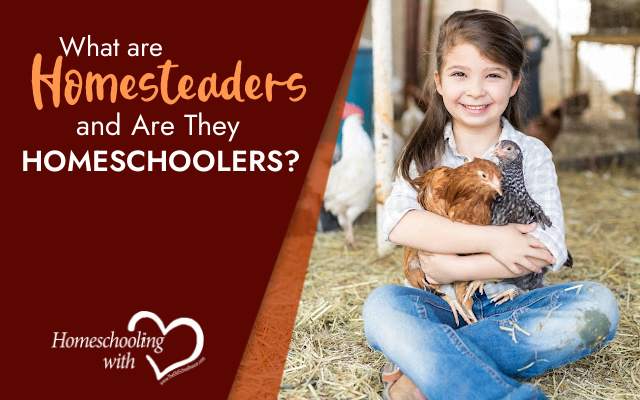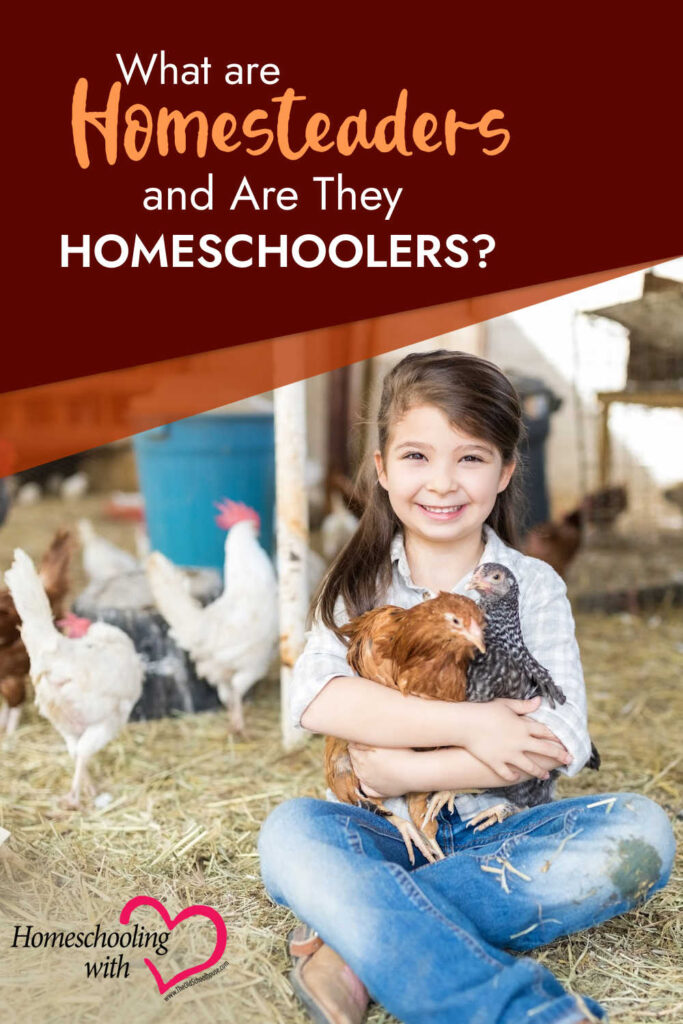What Are Homesteaders and Are They Homeschoolers?


As the homesteading movement continues to grow, many are left wondering what are homesteaders? This term has recently been revived as more families choose the life of self-sufficiency. It is important to begin by pointing out the difference between a farm and a homestead. The main difference is its size. A homestead is essentially a small plot of land—less than 100 acres. A farm is 400 acres on average and usually grows crops to make a profit. A key difference between the two is homesteaders live on their land. They cultivate enough food to feed their immediate family. Some may make enough to sell extra produce at a local farmer’s market or online, but the mentality is completely different than that of a large-scale farm. A large-scale farmer generally produces a single crop and does not necessarily live on the farm that provides them an income. While America needs farmers and the homeschooling community aims to support farmers across the nation, homesteaders and farmers are not the same. This can come to a relief to those who have admired the farm lifestyle but shied away from it because it seems unattainable. Homesteading is absolutely attainable.
What are homesteaders’ goals when it comes to purchasing a plot of land? Generally. the homesteader seeks to get back to the basics in whatever way possible. This can never be a one-size-fits-all approach. Just as no two homeschools will look the same, no two homesteads will look the same. Homesteaders have the freedom to develop their land into what they want or need it to be. Do you have a child that is lactose intolerant? You might raise goats so she can have fresh goat milk each day to help with digestion. Do you have leftover milk at the end of the day? Your crafty son might want to take on the task of making goat-milk soap. Do you have a child that struggles with asthma? Raise quail and serve him quail eggs for breakfast since they have been known to help with this ailment. These may sound like extreme measures, but are they? Oftentimes when a family is faced with a health concern for a child, they need to change their child’s menu, daily activities, and lifestyle in general. Homesteaders simply take every aspect of life into consideration and see how they can take matters into their own hands. If a child has a fever, they can utilize willow bark to bring it down. If they have a cold, syrup can be created from the elderberries growing in the backyard. This is why many homesteaders are also homeschoolers. Since they are used to problem solving and seeing how they can utilize what is around them for survival, they look at education in the same way.
For the homesteaders that are Christian, they use the Bible to teach their children about creation and what God has provided for them in the world. They go on nature hikes and walk and talk with their children about the beauty of God’s creation, leading to conversations of salvation and the Cross. What are homesteaders teaching their children about this lifestyle? Many will encourage their children to be in the world but not of it. Since most are not Amish, they interact with other people on a daily basis and must learn the balance of knowing what is best for their family without casting a judging glance on those who don’t live a similar lifestyle. This gives homesteading families the freedom to live as they feel called while connecting with others who might not think the same way as they do.
Many homesteaders that you run into today are first-generation homesteaders. This means they were not raised living this lifestyle and are learning as they go. They might attend events such as The Homesteaders of America Conference held annually in Front Royal, Virginia, or they might search online for articles on homesteading to help them get started. Willing to learn, homesteaders are eager to try new ways to do things, and if at first they don’t succeed, they will try and try again. They might not live completely off the land for every single thing. You might see them in the grocery stores once in a while, but when their garden produces excess tomatoes, they will try their hand at canning. Or if they find themselves with an overabundance of blackberries one year, you will see blackberry jam lining the cupboards. Homesteaders are in fact homeschoolers, but their education does not look the same as what you will find within the classroom. There is no need for a classroom; that is what their homestead is for.















































